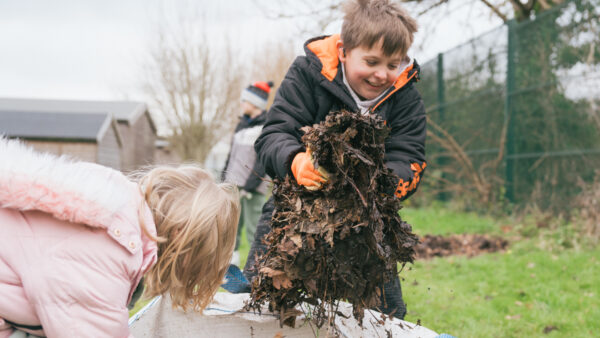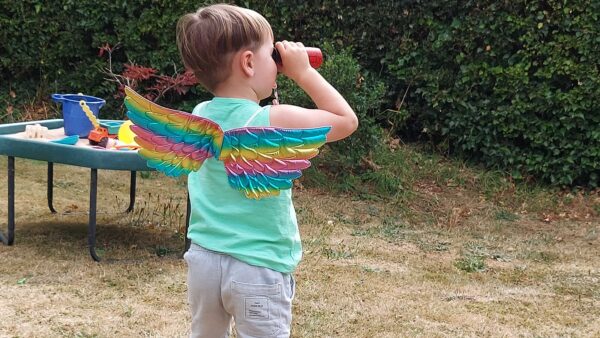Connecting with nature and the outdoors helps people live better with dementia. Many people who enjoy nature and the countryside want to continue their enjoyment of walking but feel that they would benefit from doing so in the company of others who understand the issues they are facing after a dementia diagnosis. Both people living with dementia and their carers benefit so much from dementia-friendly walking groups.
We share with you our tips and advice on how to start your own dementia-friendly walking group.
Step 1: conduct a risk assessment
Before you get going it's crucial to assess the walking route for safety and accessibility. Here are some key factors to consider:
- Path elevation and terrain: Evaluate the path's elevation and surface. Gravel or trail routes can be slippery, especially if someone is walking unaccompanied. Cobbles and uneven paving can be difficult to walk or wheel across. Paths which include steps should ideally have handrails for added support.
- Surface patterns: Be mindful of floor patterns, such as tiles, which can be confusing or distracting for someone with dementia. Where possible, opt for routes with plain, even surfaces.
- Handrails and supports: Ensure there are adequate handrails on stairs and ramps to provide extra stability.
Step 2: consider visual and other sensory elements
Understanding how people living with dementia perceive their environment can help make walks more enjoyable.
- Views: Try to consider what can be seen from different distances along the walk and be mindful that people living with dementia can be less sensitive to differences in colour. Also think about the views that someone may be able to see, or not (due to being short or long-sighted).
- Engage the senses: Strive to include a mixture of points of interest. Tall trees for looking up, or low flower beds or bushes for touch and smell. Encourage people to stop and listen if it is a peaceful spot. It’s ok if not everyone can see or access everything, providing lots of opportunities to engage with the natural environment is key.
Step 3: involve the group in decision making
Many people with dementia will have decisions made for them. We like to empower our walking group members by involving them in the planning process:
- Location choices: Encourage group members to suggest places they would like to visit. This involvement not only boosts engagement but also ensures that the walks are tailored to the group's preferences.
- Activity preferences: Discuss what activities the group enjoys and incorporate those into your walks. This could include bird watching, plant identification, scavenger hunts or simply enjoying a scenic cup of tea.
Step 4: Integrate nature and dementia-friendly activities
Enhance walks with activities that stimulate the senses and foster connection:
- Sensory activities: Explore sensory activities such as creating sound maps, where participants listen to and note down different sounds, and then share their experiences within the group.
- Resources: Utilise resources like our nature activity ideas, which provide a variety of activities suitable for all ages and abilities, both at home and outdoors.
Step 5: health and safety
Safety and comfort are paramount to the success of a dementia-friendly walking group.
- Plan ahead: always check out a new route before adding it to a walk list. Make sure there is phone signal, identify the nearest car parking and work out if it is a circular or linear route.
- Access: assessing the access to car parks and cafes is essential if there are any needs within the group. Check for height restrictions, accessible parking bays, ramps, and lifts where appropriate. Check if there is an accessible public toilet.
- Rest stops: Plan for regular breaks and ensure there are places to sit and rest. Carrying at least one pack-down chair is advisable. We carry 'tub' fold-down chairs, which are more stable than a standard camping chair, enabling someone to sit and stand up with the support of sturdy arms on the chair.
- First Aid Preparedness: Equip yourself with a first aid kit and ensure that volunteers are trained in basic first aid and moving and handling people. Download the What3Words app this will help anyone to locate you in an emergency.
Step 6: refreshments
A great way to conclude a walk is with a hot drink and a snack:
- Cafe visits: Ending the walk at a cafe is a real bonus. This gives people the opportunity to rest, hydrate and use the toilets. It is also a nice opportunity for people with dementia and their carers to be out in a group and feel confident and safe in a public space.
- Picnics: If there isn’t a café along the route, we always bring flasks and biscuits. We've noticed that our participants enjoy bringing their own reusable cups, which adds a sense of familiarity to each walk and helps empower people to contribute to reducing single-use waste.
Starting a dementia-friendly walking group requires thoughtful planning and a keen awareness of the needs and preferences of people living with dementia. By following these steps, you can create a welcoming and enjoyable experience that encourages physical activity, fosters social connection, and deepens appreciation of the natural world.
We have been running dementia-friendly walking groups in Cornwall for over ten years and regularly run groups across Cornwall. Find out more about joining one of our groups - either as a participant or a volunteer - get in touch.

Dementia
Our nature-based activity groups and experiences for people with dementia and their carers helps reduce social isolation and enhance their physical and mental wellbeing.

Activity Groups
Details of our Dementia friendly activity groups in Cornwall, from gentle walks to making pottery and gardening together.



